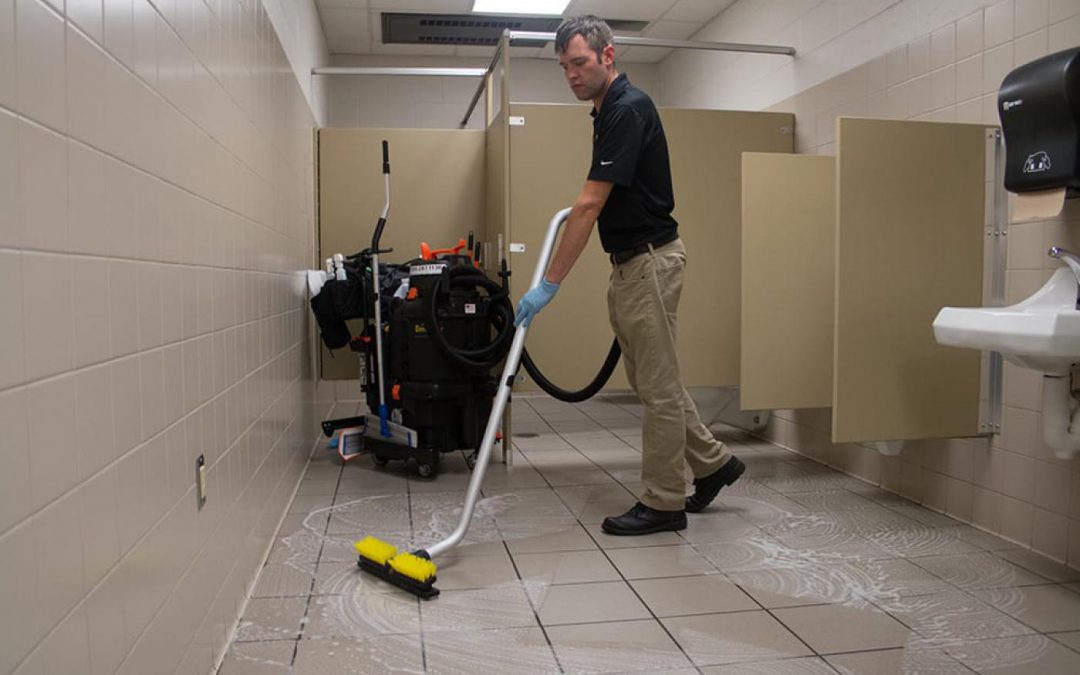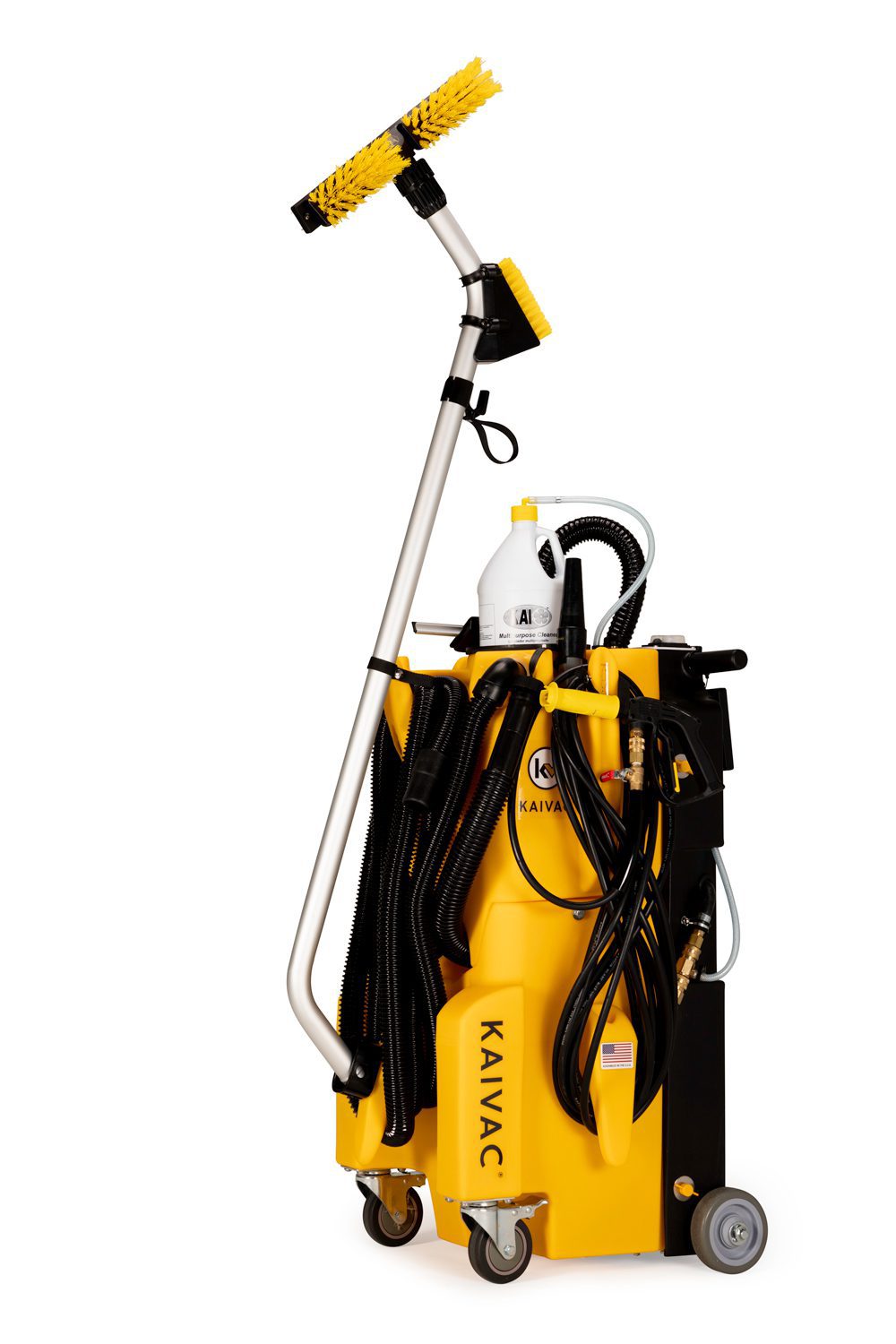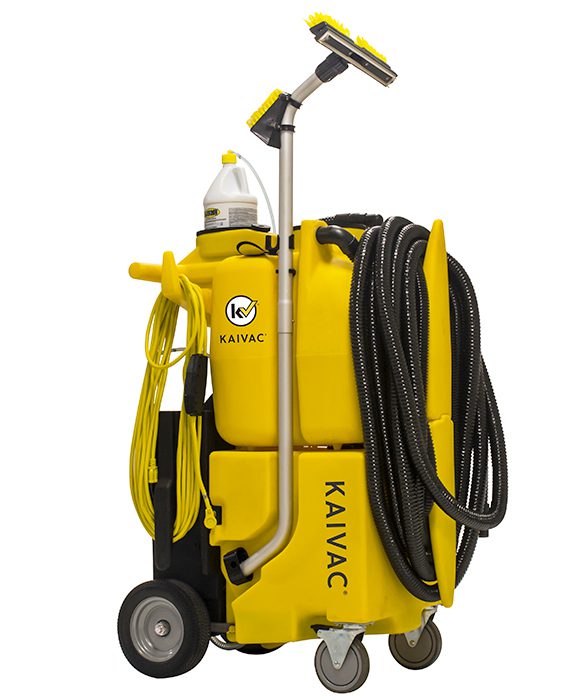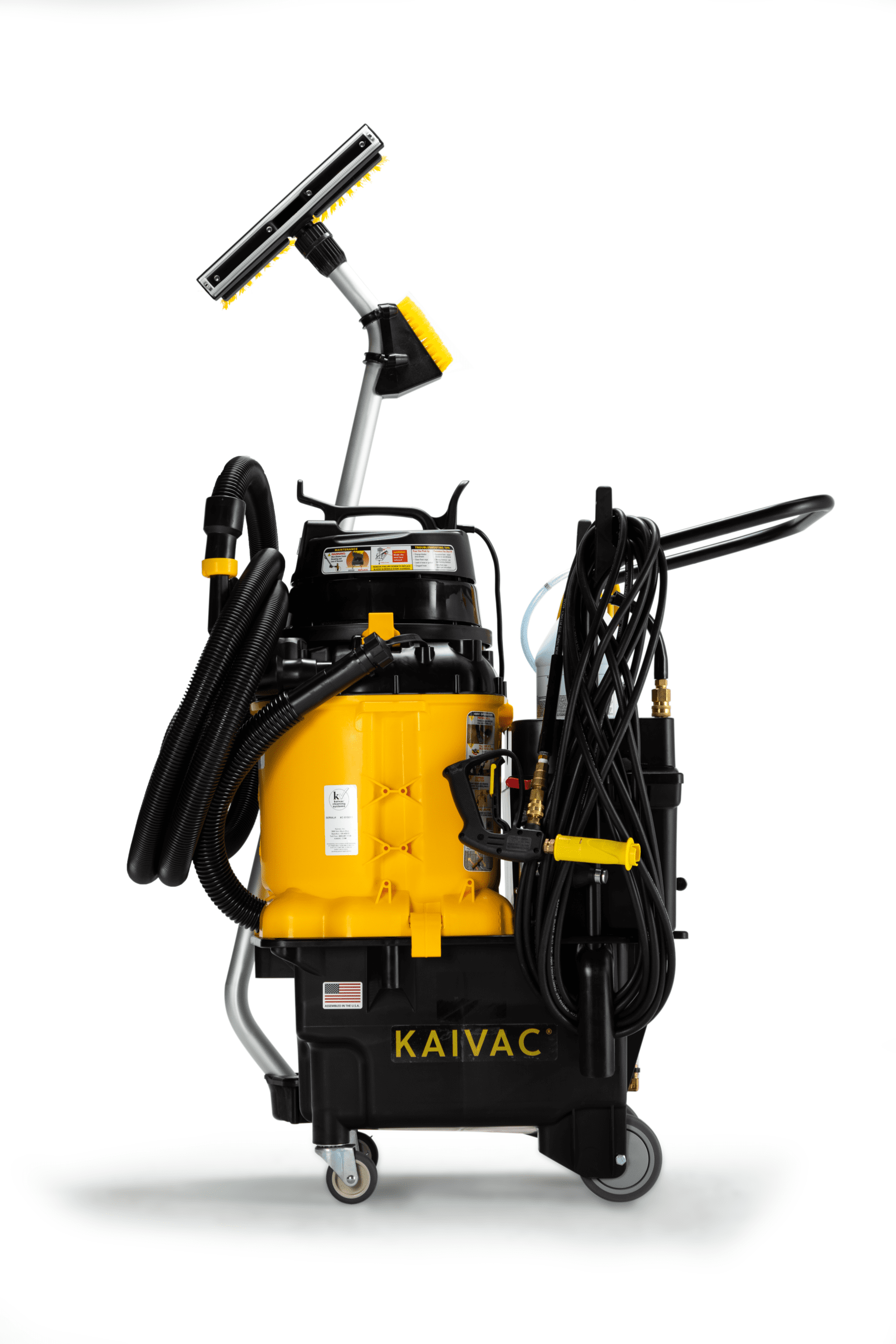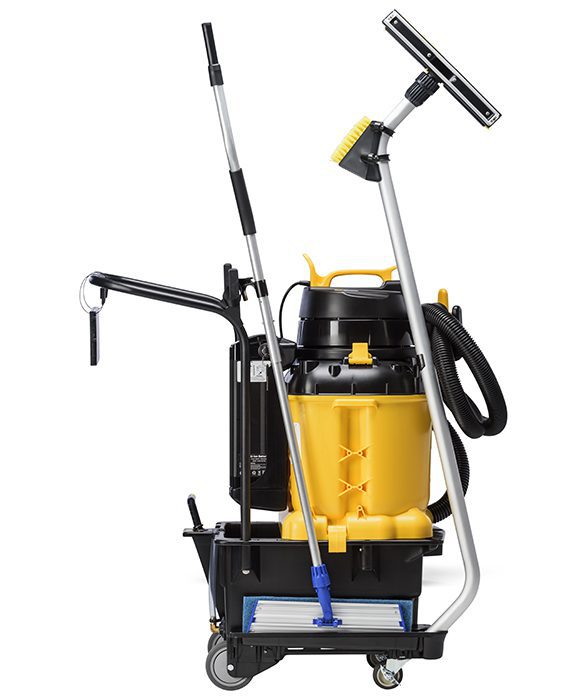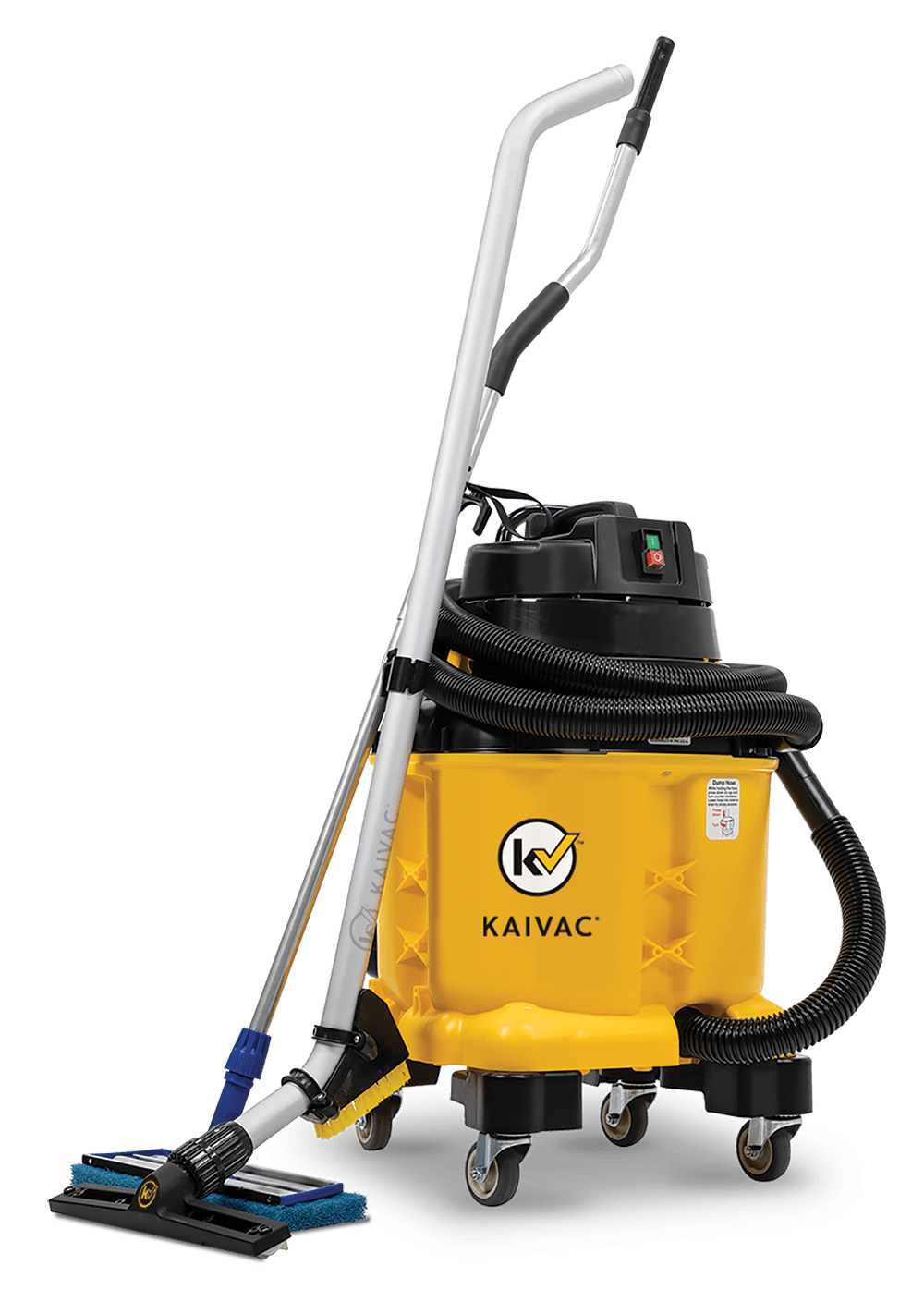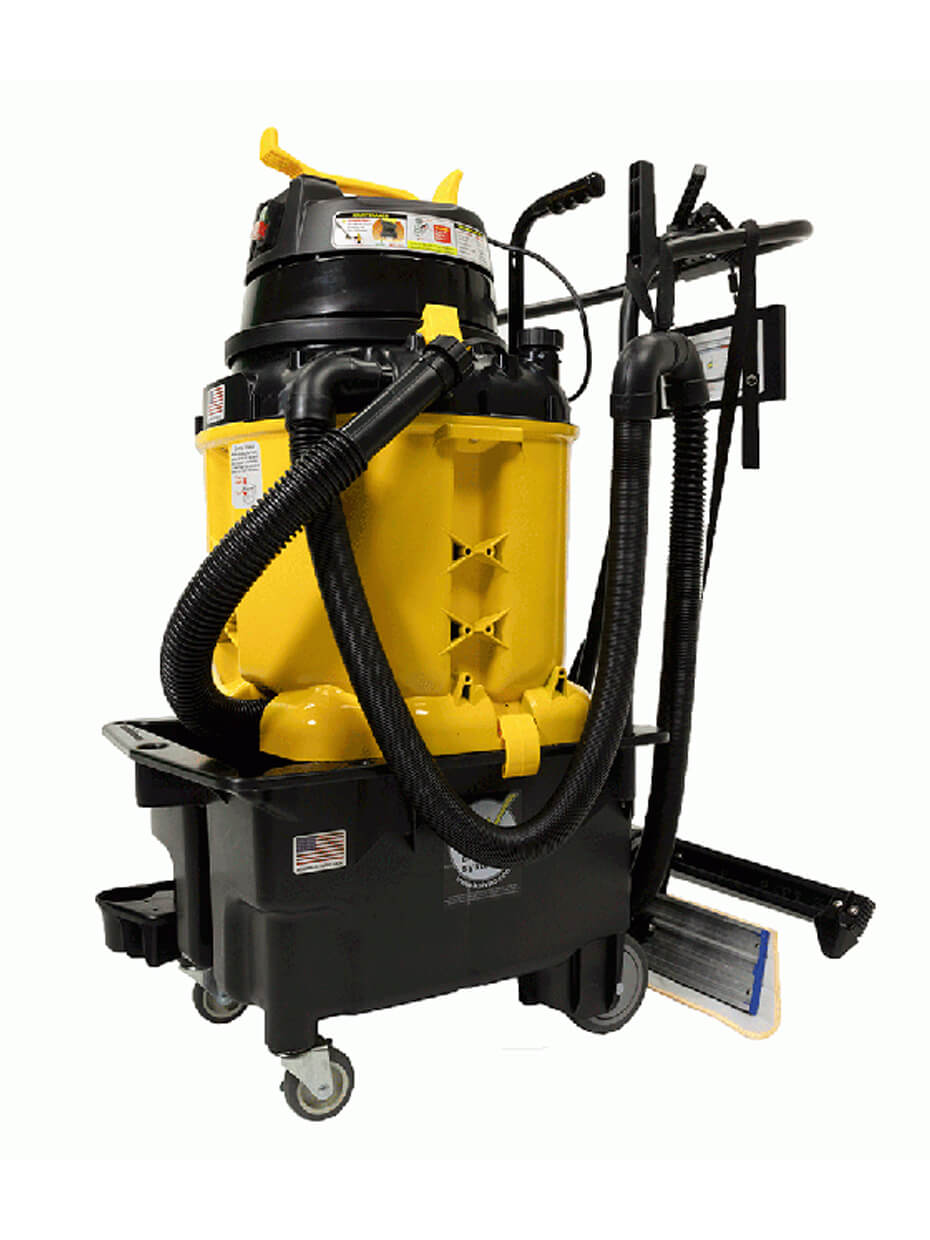Myths about floor cleaning abound. Consider the following myths and corresponding truths and follow our floor cleaning tips for best results.
Myth: Floor mopping is the best way to clean floors.
Truth: Mops remove some soil, but they may also spread more than they remove.
“Floor cleaning by mopping” is an oxymoron since once the mop is used on the floor it begins to spread soil and contamination there, next fouls the solution in the mop bucket during mop-rinsing, then returns soil back to the floor as a film. The floor may appear clean but it is not.
Modern No Touch methods stop the mop by applying fresh solution to floors, agitating, then vacuuming dirty solution for better floor cleaning. Testing shows this technology removes 99.8 percent of soil from hard floors (UMass TURI, 2012).
In a 2010 industry comparison test between No Touch floor cleaning methods and microfiber mopping, mopping removed 56.67% of organic soil, while the No Touch process removed an average of 98.60%. The mop left behind 31 times more germ-promoting soil.
Myth: You must buy a costly auto scrubber to stop the mop.
Truth: Dispense-and-vac (aka, spread-and-vac) systems do the job of an auto scrubber at a fraction of the cost using a simple rolling-bucket platform fitted with a powerful vacuum to dispense, spread, and agitate fresh solution, then remove soil by squeegeeing/vacuuming as the operator walks.
Walk-behind spread-and-vac systems enable 16,000 square feet of floor cleaning per hour (per ISSA 612 Cleaning Times), while cordless models can clean 20,000 sq. ft. per hour, making this option financially attractive as it rivals or exceeds the performance of 34″ auto scrubber while being lighter and more maneuverable. Also, integrated vacuuming virtually eliminates the need for dust mopping, further enhancing ROI.
Wet Floors
Myth: Floor cleaning means leaving floors wet.
Truth: Methods that apply and remove solution in one pass, clean floors and leave them virtually dry, reducing the risk of slip and fall incidents.
The “instant drying” feature of these systems raises the safety of floor cleaning enough to merit National Flooring Safety Institute (NFSI) certification.
The Cost of Floorcare
Myth: Some floors require costly tools and treatments to clean them.
Truth: Economical dispense-and-vac floor cleaning methods are effective for:
- Ceramic tile
- Concrete
- Hardwood
- Laminate
- Stone
- Terrazzo
- Vinyl tile
No Touch systems enable floor cleaning in:
- Restrooms
- Kitchens
- Stair Wells
- Locker Rooms
- Hallways
- Exercise Facilities
(They also clean carpet.)
Extending Floor Life Through Regular Maintenance
Partial Myth: Floors need regular expensive treatments and stain removers to beautify, protect and preserve the surface.
Whole Truth: Floors such as hardwood, some laminates and stone, and vinyl tile, last longer and look better when properly finished, spot cleaned, scrubbed and recoated, but finishes last longest through better floor cleaning as it stretches deep-scrub, strip and recoat intervals, reducing labor, material and floor replacement costs. Diligence is one of the best floor cleaning tips you can follow.
